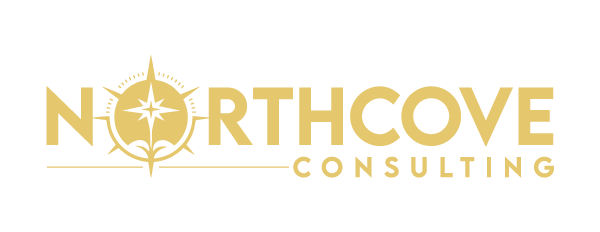
HR Compliance Checklist for Small Businesses to Avoid Costly Legal Issues
Running a small business means juggling a lot—from payroll to hiring to keeping the lights on. It’s easy for HR compliance to fall down the to-do list. But here’s the truth: one overlooked form, missed policy, or outdated handbook could cost you big. We’re talking about fines, lawsuits, and audits—you name it. In 2023 alone, the EEOC reported that employers paid over $513 million in HR-related penalties and settlements.
That’s why having a smart, well-structured HR compliance checklist is a must. It doesn’t just protect your business—it builds trust with your team and keeps things running smoothly. In this guide, you’ll get a clear, practical breakdown of everything small businesses need to stay compliant and avoid unnecessary drama down the road.
HR Compliance Checklist for Small Business Basics
Let’s start with the foundation. This is the core HR legal compliance checklist every small business needs to cover, no matter your industry or team size:
Category | What to Check |
Hiring & Onboarding | I-9 verification, background checks |
Payroll & Wages | FLSA classification, state wage laws |
Benefits & Leave | FMLA, COBRA, ACA (if you qualify) |
Safety & Security | OSHA protocols, emergency planning |
Workplace Conduct | Harassment & discrimination policies |
Recordkeeping | Personnel file retention and access protocols |
This list forms the foundation of a reliable HR legal compliance, helping you cover your legal bases and stay out of trouble.
HR Audit Checklist: Know Where You Stand
Not sure how your HR setup is holding up? A regular audit is the best way to catch gaps before they become expensive problems. Use this audit checklist to check in on key areas:
- Are all labor law posters and notices visible?
- Is your employee handbook current and used?
- Are job roles properly classified as exempt or non-exempt under FLSA?
- Are time, wage, and personnel records complete and up to date?
- Are your payroll systems processing deductions, taxes, and benefits correctly?
This audit not only checks the boxes—it shows where you can align your practices with bigger goals like leadership compensation through your executive compensation consulting services.
HR Compliance Checklist for New Employees
The first few days of employment are more than just paperwork—they set the tone for culture and compliance. A strong HR compliance checklist ensures you start off on the right foot.
✅ Offer letter signed and filed
✅ I-9 verification and documentation
✅ W-4 and state tax forms submitted
✅ Employee handbook reviewed and acknowledged
✅ NDAs or confidentiality agreements signed
✅ Payroll and benefits enrollment completed
✅ Mandatory trainings (safety, conduct, etc.)
These steps create a smooth onboarding experience and reduce the risk of legal hiccups. If you’re also hiring executives, align onboarding with your executive compensation benchmarking for consistency across the board.
Employee Compliance Checklist: Keep It Running Smoothly
Compliance doesn’t end after onboarding. Keep things clean and compliant with an ongoing compliance checklist that covers:
- Timekeeping accuracy (especially for hourly workers)
- Paid leave tracking (vacation, FMLA, sick days)
- Harassment and ethics training refreshers
- Documenting performance issues properly
- Keeping contact and benefit info updated
- Regular pay audits to confirm wage compliance
This helps maintain fairness, transparency, and readiness, especially when paired with your strategy for how to develop HR policies.
HR Compliance Checklist by State
Here’s what to look for in your HR compliance checklist:
- Minimum wage variations
- Paid sick leave laws
- Final paycheck timing
- State-specific harassment training requirements
- Job classification standards (like California’s ABC test)
Example:
In California, harassment prevention training is mandatory for any business with five or more employees. New York, meanwhile, requires a written pay notice at the time of hire. If your team spans multiple states or includes remote workers, make sure you’re covered in each location.
HR Compliance Requirements for Documentation and Records
Compliance requirements: Documentation isn’t optional—it’s your defense when audits or disputes arise. Here’s what you need to keep, and for how long:
✔ I-9 forms – 3 years after hire or 1 year after termination
✔ Tax forms (W-4, state forms) – 4+ years
✔ Payroll records – At least 3 years
✔ Safety and injury reports – 5 years (OSHA standards)
✔ Disciplinary records – Varies, but at least through employment + 1 year
Strong recordkeeping reduces your legal exposure and supports smart planning when aligning with total reward solutions for talent management.
Real-World Example: How One Business Dodged a $25K Mistake
A marketing agency in Texas was caught off guard during a Department of Labor audit. Turns out, two project managers were misclassified as exempt and weren’t paid overtime properly. After bringing in an HR pro, they:
- Reclassified job roles correctly
- Implemented a time-tracking system
- Updated their employee handbook
- Rolled out an HR compliance checklist company-wide
That one decision saved them $25,000 in penalties—and strengthened their internal processes moving forward.
Using an HR Compliance Checklist to Prepare for Growth
When your business starts to grow, so do the rules. More employees. More regulations. Think of it as your legal GPS. As you bring on new hires, expand into new states, or cross that 50-employee threshold, your compliance obligations change fast. For example, hitting 50 employees means the FMLA and ACA kick in. And if you’re not ready? You could be looking at penalties and paperwork chaos.
Using a checklist helps you keep track of wage classifications, leave laws, training mandates, and other key shifts as your business scales. It turns what could feel overwhelming into something you can actually manage and plan for.
When growth comes knocking, a solid HR checklist makes sure you’re not caught off guard.
Customizing Your HR Compliance Checklist for Remote Teams
Remote work isn’t a trend, it’s a new reality. And with that shift comes a different set of compliance challenges. If your team spans cities, states, or even time zones, your old checklist may not cut it anymore.
A customized HR compliance checklist makes all the difference.
You’ll need to think beyond headquarters and consider:
- What wage and labor laws apply where your team actually lives?
- Are time-tracking systems fair and accurate for remote workers?
- How are you storing digital HR records? securely and accessible?
HR compliance checklists and strategies are not one-size-fits-all; they need to be tailored according to your industry and your work environment, and that’s when you can really see the result of implemented policies.
Conclusion: Protect and Empower Your Business with HR Compliance Checklist
From hiring your first employee to planning executive pay, HR compliance checklist is your foundation. Keep it strong, stay informed, and link it to strategic goals like total reward solutions for talent management to move your business forward.
Need help putting it all together? Northcove Consulting is here to guide you every step of the way.
Let’s connect for all your HR compliance-related needs. Contact us through email [email protected] or Call: (877) 595-3087.
Frequently Asked Questions
What is an HR compliance checklist?
HR compliance checklist is a structured tool that outlines the legal and regulatory responsibilities involved in managing employees, from hiring to payroll to safety.
Why does the compliance checklist for small businesses matter?
Because missing even one requirement can cost you thousands in penalties, damage your reputation, and disrupt your team.
What should a new hire compliance checklist include?
Legal forms (I-9, tax forms), handbook sign-off, training, payroll setup, and any confidentiality agreements.
How often should we audit HR compliance?
At least once a year, or anytime you experience rapid growth or enter new markets.
Are compliance rules the same in every state?
Nope. Always check local labor laws—state rules can differ from federal ones, especially around wages and leave.
Related Posts
How Compensation Benchmarking Tools Help HR Make Data Driven Pay Decisions
How Compensation Benchmarking Tools Help HR Make Data Driven Pay Decisions Today’s changing work environment…
Employee Handbook Best Practices Every Small Business Should Follow
Employee Handbook Best Practices Every Small Business Should Follow An HR management consulting company recognizes…
How an Interim Total Rewards Consultant Can Optimize Your Compensation Strategy Fast
How an Interim Total Rewards Consultant Can Optimize Your Compensation Strategy Fast When companies face…
How to Build Effective Total Rewards Communication Strategies That Employees Understand
How to Build Effective Total Rewards Communication Strategies That Employees Understand Employees want to feel…







